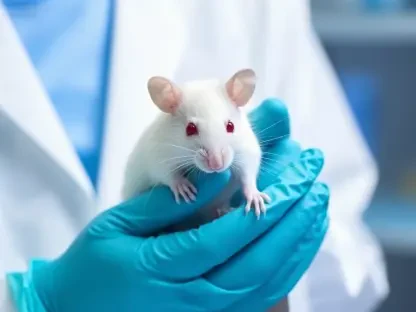Urinary tract infections (UTIs) stand as a prevalent health challenge for children worldwide, affecting millions and creating significant stress for families while straining healthcare resources with thousands of hospital admissions annually. These infections, though often treatable, can escalate into serious conditions like kidney damage if not addressed swiftly and appropriately. The impact is felt not only in the immediate discomfort and disruption to a child’s life but also in the potential for long-term health consequences. Statistics reveal that around 8% of girls and 2% of boys experience a UTI by the age of seven, with anatomical differences largely explaining the gender disparity. In the earliest stages of life, particularly within the first year, uncircumcised boys face a higher risk compared to their peers. The financial toll on healthcare systems is considerable, yet the encouraging aspect remains that with timely recognition and proper intervention, most cases can be resolved without lasting harm. This article aims to break down the complexities of UTIs in pediatric populations, offering actionable guidance for parents, caregivers, and healthcare professionals. From identifying subtle symptoms to navigating treatment options and emphasizing prevention, the goal is to equip readers with the knowledge needed to tackle this common yet critical issue. Additionally, the growing concern of antimicrobial resistance will be explored, underscoring the need for responsible medical practices in safeguarding future treatment efficacy.
Understanding Urinary Tract Infections in Children
What Are UTIs and Why Do They Matter?
Urinary tract infections occur when bacteria, predominantly Escherichia coli (E. coli), infiltrate the urinary system, which includes the bladder, urethra, and sometimes the kidneys. Children are particularly susceptible due to factors such as underdeveloped immune responses and anatomical structures that can facilitate bacterial entry. For instance, girls have a shorter urethra, making it easier for pathogens to reach the bladder, while in infants, immature bladder control can contribute to infection risk. UTIs can manifest as mild bladder irritations, known as cystitis, or progress to more severe kidney infections, termed pyelonephritis. The significance of these infections lies in their potential to cause discomfort, disrupt daily activities, and, if untreated, lead to complications like renal scarring. Early intervention is crucial to prevent such outcomes, highlighting the importance of awareness among those responsible for a child’s care.
Beyond the immediate health effects, urinary tract infections (UTIs) in children highlight significant public health challenges that demand attention and action from both families and healthcare providers. These infections often require medical attention, ranging from simple outpatient treatments to hospital stays in severe cases. This not only affects the child’s well-being but also places emotional and financial burdens on families. Moreover, repeated or improperly managed infections can contribute to the development of antibiotic-resistant bacteria, a growing global concern. Addressing UTIs effectively involves understanding their causes and impact, ensuring that both caregivers and medical professionals are equipped to act promptly. The focus must remain on mitigating risks through education and timely medical response to preserve a child’s long-term health.
Prevalence and Impact on Health Systems
The widespread occurrence of UTIs among children paints a concerning picture, with significant differences based on gender and age, highlighting the need for targeted awareness and medical intervention. By the age of seven, a notable percentage of girls—around 8%—have encountered at least one UTI, compared to about 2% of boys, largely due to anatomical predispositions. However, during the first year of life, uncircumcised boys face a heightened risk, illustrating how specific factors can shift vulnerability. These statistics reflect a common yet impactful condition that demands attention from healthcare providers and families alike. The sheer volume of cases translates into a substantial load on medical facilities, often leading to overcrowded clinics and emergency rooms.
Economically, the strain is evident as hospital admissions for UTIs rack up considerable costs each year, with data indicating that thousands of pediatric cases contribute to millions in healthcare expenditures. These costs cover everything from diagnostic tests to extended inpatient care for complicated infections. Beyond financial implications, the potential for long-term consequences like kidney damage in severe or recurrent cases amplifies the urgency for effective management strategies. Reducing hospital visits through early detection and outpatient treatment can alleviate some of this burden, but it requires coordinated efforts across the healthcare spectrum. Prioritizing swift diagnosis and intervention remains essential to lessen both the immediate and future impact on health systems and affected families.
Causes and Risk Factors
Common Culprits Behind Pediatric UTIs
The primary driver of urinary tract infections in children is bacterial invasion, with Escherichia coli (E. coli) responsible for approximately 80% of cases. This bacterium, commonly found in the intestinal tract, can migrate to the urinary system, often due to proximity in girls or hygiene challenges in younger children. Other pathogens, such as Klebsiella, Proteus mirabilis, and Enterobacter, also play a role, though less frequently. In certain situations, particularly among immunocompromised children, fungal infections like those caused by Candida species may emerge, adding complexity to treatment. The challenge of managing these infections is compounded by the increasing prevalence of antibiotic-resistant strains, which can render standard therapies less effective and necessitate alternative approaches.
Antibiotic resistance poses a significant challenge, as the overuse or misuse of broad-spectrum drugs fuels the development of resistant bacteria, making infections harder to treat. This trend not only complicates individual treatment plans but also escalates healthcare costs due to the need for more potent, often more expensive, medications. The reliance on such treatments can create a vicious cycle, further diminishing the arsenal of effective antibiotics. Addressing this issue requires a careful balance of immediate infection control and long-term preservation of drug efficacy. Understanding the microbial causes of UTIs and their evolving resistance patterns is fundamental to crafting targeted therapies that minimize risks while ensuring successful outcomes for young patients.
Who’s at Higher Risk?
Several factors heighten a child’s likelihood of developing a UTI, with gender playing a prominent role after infancy, as girls face greater exposure due to anatomical differences. In the first year of life, uncircumcised boys are notably more susceptible compared to their circumcised counterparts, largely due to the potential for bacterial accumulation under the foreskin. Additional risks include voiding dysfunction, where improper bladder emptying allows bacteria to proliferate, and the absence of breastfeeding, which may deprive infants of protective antibodies. Poor hygiene practices, such as inadequate wiping techniques, further elevate the chances of infection, particularly in young girls who are still learning proper habits.
Medical and structural issues also contribute significantly to UTI risk, making it crucial to address these factors for effective prevention. Children with urinary catheters are prone to infections due to biofilm formation on the device, which remains a persistent challenge in hospital settings. Anatomical abnormalities, like vesicoureteral reflux, where urine flows backward from the bladder to the kidneys, create an environment conducive to bacterial growth and recurrent infections. Immunosuppression, whether from medical treatments or underlying conditions, weakens defenses against pathogens. A history of previous UTIs or a family predisposition can signal heightened vulnerability as well. Tailoring prevention and monitoring efforts to these risk profiles is essential for reducing incidence and ensuring that high-risk children receive timely care to avoid complications.
Recognizing and Diagnosing UTIs
Spotting the Signs Across Age Groups
Identifying urinary tract infections in children presents unique challenges, especially since symptoms often lack specificity, particularly in infants and toddlers. In the youngest age group, under three months, signs might be as vague as fever without an obvious cause, irritability, or poor feeding, which can easily be mistaken for other illnesses. As children grow, symptoms become somewhat clearer but still vary widely. Preschool-aged children may complain of pain during urination or exhibit sudden bedwetting after previously achieving control, while older children might report frequent urges to urinate or abdominal discomfort. These diverse presentations necessitate a high level of suspicion from caregivers and medical professionals to ensure infections are not overlooked.
The variability in how UTIs manifest across different ages underscores the importance of thorough observation and communication between parents and healthcare providers. For instance, a school-aged child might articulate feelings of burning or urgency, providing clearer clues, whereas an infant’s distress might only be evident through changes in behavior or appetite. Fever, especially when accompanied by unusual urine odor or appearance, often serves as a critical red flag, prompting further investigation. Educating families on these age-specific indicators can accelerate the process of seeking medical attention, reducing the risk of progression to more severe conditions like kidney involvement. Vigilance remains key to bridging the gap between subtle early signs and timely intervention.
Diagnostic Tools and Challenges
Accurate diagnosis of UTIs in children hinges on the strategic use of diagnostic tools, with urine testing at the forefront, playing a pivotal role in identifying infections promptly. Dipstick tests offer a quick initial assessment, detecting markers like nitrites or leukocytes that suggest infection, though they are less reliable in very young children. For definitive confirmation, urine culture and microscopy are essential, particularly in infants under three months, where urgent testing is recommended to guide treatment. Collecting a proper sample is critical—clean catch methods are preferred for older children to avoid contamination, while catheterization or suprapubic aspiration may be necessary for infants when non-invasive options fail. Ensuring samples are obtained before starting antibiotics preserves the accuracy of pathogen identification.
Challenges in diagnosis extend beyond sample collection to the interpretation of results and differentiation from other conditions. Non-specific symptoms in young children can mimic ailments like gastroenteritis or even meningitis, leading to potential misdiagnosis if a comprehensive history and physical exam are not conducted. Over-reliance on antibiotics without confirmed infection risks unnecessary exposure and contributes to resistance. Moreover, distinguishing between lower tract infections, such as cystitis, and more serious upper tract issues, like pyelonephritis, requires careful clinical judgment, often supplemented by imaging in complex cases. Overcoming these diagnostic hurdles demands a methodical approach, prioritizing precision to ensure that treatment aligns with the true nature of the child’s condition.
Treatment Approaches for Pediatric UTIs
Tailored Antibiotic Therapy
Treatment of urinary tract infections in children must be customized to account for age, severity of the infection, and individual health factors. For infants under three months, the risk of systemic illness is high, necessitating urgent referral to pediatric specialists for parenteral antibiotics, often administered in a hospital setting. In older children with uncomplicated lower tract infections, short courses of oral antibiotics such as nitrofurantoin or trimethoprim are typically effective as first-line options. When resistance or lack of response is encountered, alternatives like amoxicillin or cephalexin may be considered, guided by local resistance patterns and the child’s medical history. This targeted approach minimizes unnecessary drug exposure while addressing the infection effectively.
For more severe cases, particularly those involving the upper urinary tract like pyelonephritis, initial treatment often involves intravenous antibiotics such as ceftriaxone or gentamicin to ensure rapid control of the infection. Once clinical improvement is observed, a switch to oral therapy can usually be made to complete the course at home, reducing the duration of hospital stays. Decisions on the duration and type of antibiotic are influenced by factors like the presence of fever, pain levels, and overall response to initial treatment. Continuous monitoring during therapy helps adjust plans if complications arise or if the chosen drug proves ineffective. Balancing aggressive intervention with the need to limit antibiotic overuse remains a cornerstone of managing these infections in pediatric patients.
Managing Recurrent Infections
Recurrent UTIs in children, defined as multiple episodes within a short timeframe, often signal underlying issues that require specialized attention. Initial steps focus on identifying potential causes, such as anatomical abnormalities like vesicoureteral reflux or behavioral factors like delayed voiding. Referral to a pediatric urologist or nephrologist may be necessary to conduct imaging studies or other assessments to pinpoint the root cause. Treatment for these cases might include longer antibiotic courses or, in some instances, low-dose prophylactic antibiotics to prevent further episodes, though this is approached cautiously to avoid fostering resistance. Addressing non-medical contributors, such as hygiene practices, is equally vital in breaking the cycle of recurrence.
The long-term management of recurrent infections prioritizes minimizing the risks of kidney damage, which can result from repeated upper tract involvement, and ensuring the child’s overall urinary health. Close follow-up with healthcare providers ensures that any new symptoms are caught early, and adjustments to preventive strategies are made as the child grows. Educating families on recognizing warning signs and adhering to recommended interventions plays a significant role in reducing frequency. Additionally, exploring lifestyle modifications, like ensuring regular bathroom breaks, can complement medical treatments. The goal is to create a sustainable plan that protects the child’s urinary health while limiting reliance on antibiotics, thereby preserving their efficacy for when they are truly needed in critical situations.
The Role of Antimicrobial Stewardship
Combating Antibiotic Resistance
Antimicrobial resistance represents a pressing global health threat, particularly in the context of treating urinary tract infections in children, where inappropriate antibiotic use can exacerbate the problem. Strategies to combat this issue focus on ensuring that prescriptions are based on urine culture results, identifying the specific pathogen and its sensitivities before initiating therapy. Favoring narrow-spectrum antibiotics over broad-spectrum options helps target the infection more precisely, reducing the collateral impact on beneficial bacteria and slowing the development of resistant strains. This approach aligns with national goals to reduce antimicrobial use by 5% by 2029, emphasizing sustainable medical practices.
Regular review of treatment plans is a critical component in the fight against resistance, especially when managing severe infections in pediatric patients. Intravenous antibiotics, often used in severe cases, should be reassessed every 24 hours to determine if a transition to oral forms is feasible, thereby limiting exposure. Healthcare systems must also track local resistance patterns to inform prescribing guidelines, ensuring that chosen therapies remain effective against prevalent pathogens. Educating medical professionals on the risks of overprescribing fosters a culture of responsibility, while involving microbiologists in complex cases can refine treatment decisions. These concerted efforts aim to preserve the effectiveness of current antibiotics, safeguarding future treatment options for pediatric patients facing UTIs and beyond.
Pharmacists as Key Allies
Pharmacists serve as indispensable partners in the management of pediatric UTIs, extending their role beyond dispensing medications to actively shaping treatment outcomes. Their expertise is crucial in reviewing prescriptions for appropriateness, ensuring that dosages are accurately calculated based on a child’s age and weight to avoid under- or overdosing. They also play a pivotal role in confirming that the selected antibiotic aligns with culture results and local guidelines, preventing unnecessary use of broad-spectrum drugs. By acting as a checkpoint, pharmacists help maintain the integrity of treatment plans, contributing directly to patient safety and the broader fight against antimicrobial resistance.
Equally important is the educational support pharmacists provide to families navigating a child’s UTI treatment, ensuring they understand the process and feel confident in managing it. They offer clear guidance on how to administer medications, including timing and potential side effects to watch for, such as gastrointestinal upset or allergic reactions. Counseling on the importance of completing the full course of antibiotics, even if symptoms improve, helps prevent recurrence and resistance development. Additionally, pharmacists often participate in audits and feedback loops with prescribers to enhance prescribing practices, identifying trends or errors that can be addressed systemically. Their position at the intersection of clinical care and community interaction makes them vital in promoting rational drug use and supporting long-term health strategies for children.
Preventing UTIs in Children
Everyday Habits to Lower Risk
Preventing urinary tract infections in children often starts with simple, everyday habits that can significantly reduce the likelihood of bacterial invasion. Encouraging regular hydration ensures that the bladder is flushed frequently, diluting urine and minimizing the chance for pathogens to adhere to the urinary tract walls. Teaching proper wiping techniques, particularly for girls, where wiping from front to back prevents the transfer of bacteria from the anal area to the urethra, is another fundamental step. Avoiding bladder irritants, such as heavily scented soaps or bubble baths, can also help maintain a healthy urinary environment by reducing inflammation or irritation that might predispose to infection.
Consistency in bathroom routines plays a substantial role in prevention as well. Encouraging children to urinate regularly, rather than holding urine for extended periods, helps prevent bacterial buildup in the bladder. For younger children still in diapers, frequent changes reduce moisture and bacterial growth near the urethra. Addressing constipation, which can exert pressure on the bladder and hinder complete emptying, is another practical measure often overlooked. These straightforward adjustments, when integrated into daily life, empower families to take proactive steps in safeguarding a child’s urinary health. Reinforcing these habits early can establish lifelong practices that lower UTI risks without relying solely on medical interventions.
Education and Family Support
Equipping families with knowledge about UTI prevention and management forms a cornerstone of reducing infection rates in children. Healthcare providers can offer tailored advice on recognizing early symptoms, such as changes in urination patterns or unexplained fever, enabling parents to seek care before complications arise. Guidance on treatment adherence, including the importance of completing antibiotic courses and monitoring for side effects, ensures that interventions are as effective as possible. This education extends to practical tips, like ensuring children wear breathable, non-restrictive clothing to minimize moisture buildup, which can foster bacterial growth.
Support goes beyond information dissemination to fostering a collaborative relationship between families and healthcare teams, ensuring that everyone works together for the best outcomes. Providing resources, such as pamphlets or access to helplines for quick questions about symptoms or medication, can alleviate anxiety and improve results. Addressing cultural or language barriers through translated materials or interpreter services ensures that all caregivers understand critical prevention strategies. Empowering parents to advocate for their child’s needs, whether by requesting timely urine tests or discussing recurrent infections with specialists, builds confidence in managing urinary health. This comprehensive support system not only prevents UTIs but also strengthens trust in medical guidance, creating a foundation for sustained well-being.
Multidisciplinary Collaboration
Teamwork in Pediatric UTI Care
Effective management of urinary tract infections in children demands a cohesive effort from a diverse team of healthcare professionals, including doctors, nurses, pharmacists, and specialists like pediatric urologists. Each member contributes unique expertise, from diagnosing and prescribing appropriate treatments to ensuring accurate medication administration and follow-up care. Clear communication channels among these groups are vital to align on treatment goals, share critical patient updates, and address any emerging complications swiftly. Involving families as active participants in this team ensures that home care aligns with clinical recommendations, creating a seamless continuum of support for the child.
The collaborative model extends to integrating various care settings, from primary clinics to hospital environments, ensuring that transitions are smooth and information is not lost. For instance, when a child moves from inpatient treatment for a severe infection to outpatient follow-up, detailed discharge summaries and accessible contact points for questions prevent gaps in care. Regular case discussions among team members can also refine approaches to complex or recurrent cases, drawing on collective insights to tailor interventions. This unified front not only enhances immediate treatment outcomes but also builds a robust framework for addressing broader challenges, such as antimicrobial resistance, through shared responsibility and coordinated strategies.
Addressing Long-Term Health Risks
Beyond resolving acute urinary tract infections, a critical focus of multidisciplinary care lies in preventing long-term health risks, such as renal scarring or chronic kidney issues, which can stem from severe or repeated infections. Ongoing monitoring of at-risk children, particularly those with anatomical abnormalities or a history of recurrent UTIs, is essential to detect early signs of complications. This might involve periodic imaging studies or renal function tests to assess for damage, coupled with tailored preventive measures to mitigate further episodes. Specialists play a key role in guiding these assessments, ensuring that interventions are proactive rather than reactive.
Follow-up care also emphasizes lifestyle and medical strategies to protect urinary health over time, ensuring that children maintain optimal well-being as they grow. Regular check-ins with healthcare providers allow for adjustments to prevention plans as a child develops, addressing developmental changes or new risk factors. Educating families on the importance of sustained vigilance, even after an infection resolves, helps maintain focus on potential warning signs of recurrence or kidney stress, such as high blood pressure later in life. Collaboration across disciplines ensures that each aspect of a child’s care—from nutritional guidance to psychological support for treatment adherence—is addressed holistically. This comprehensive approach aims to safeguard not just immediate recovery but also the child’s future quality of life, minimizing the shadow of past infections.









